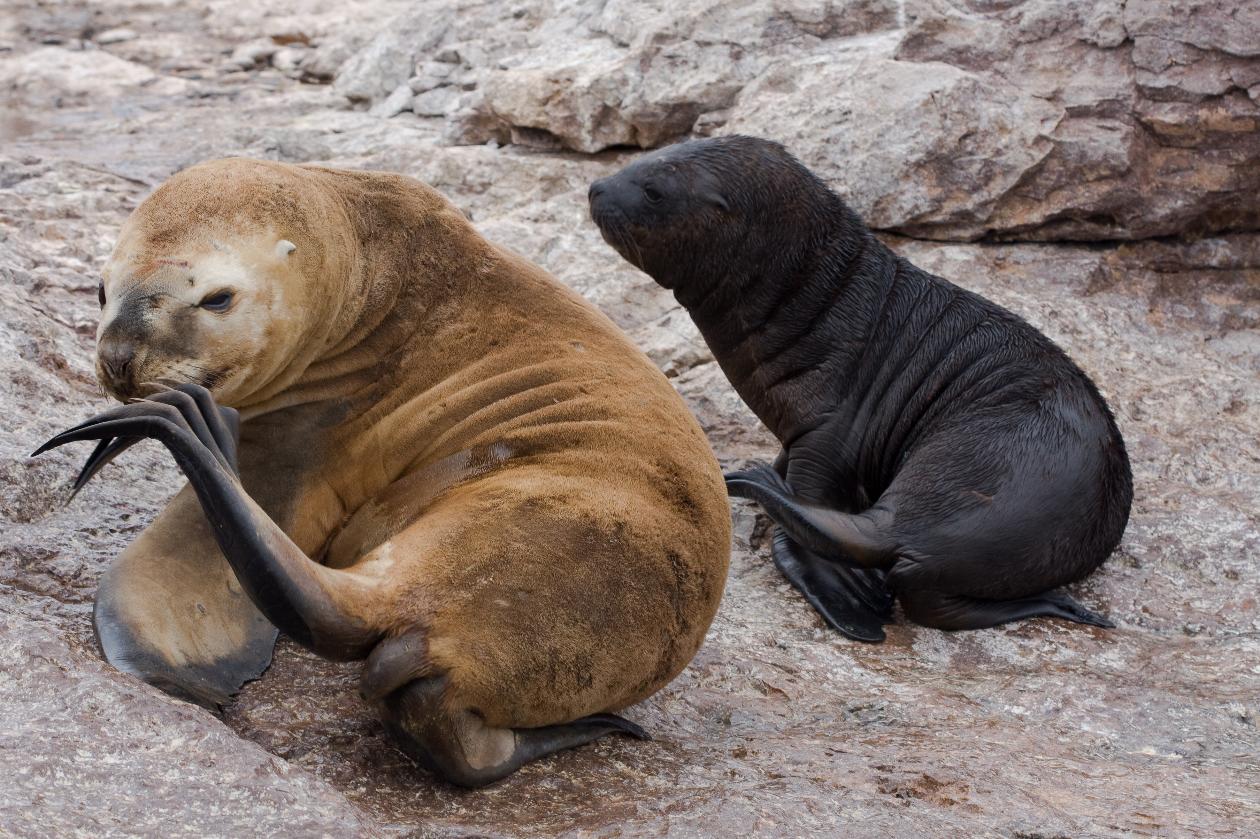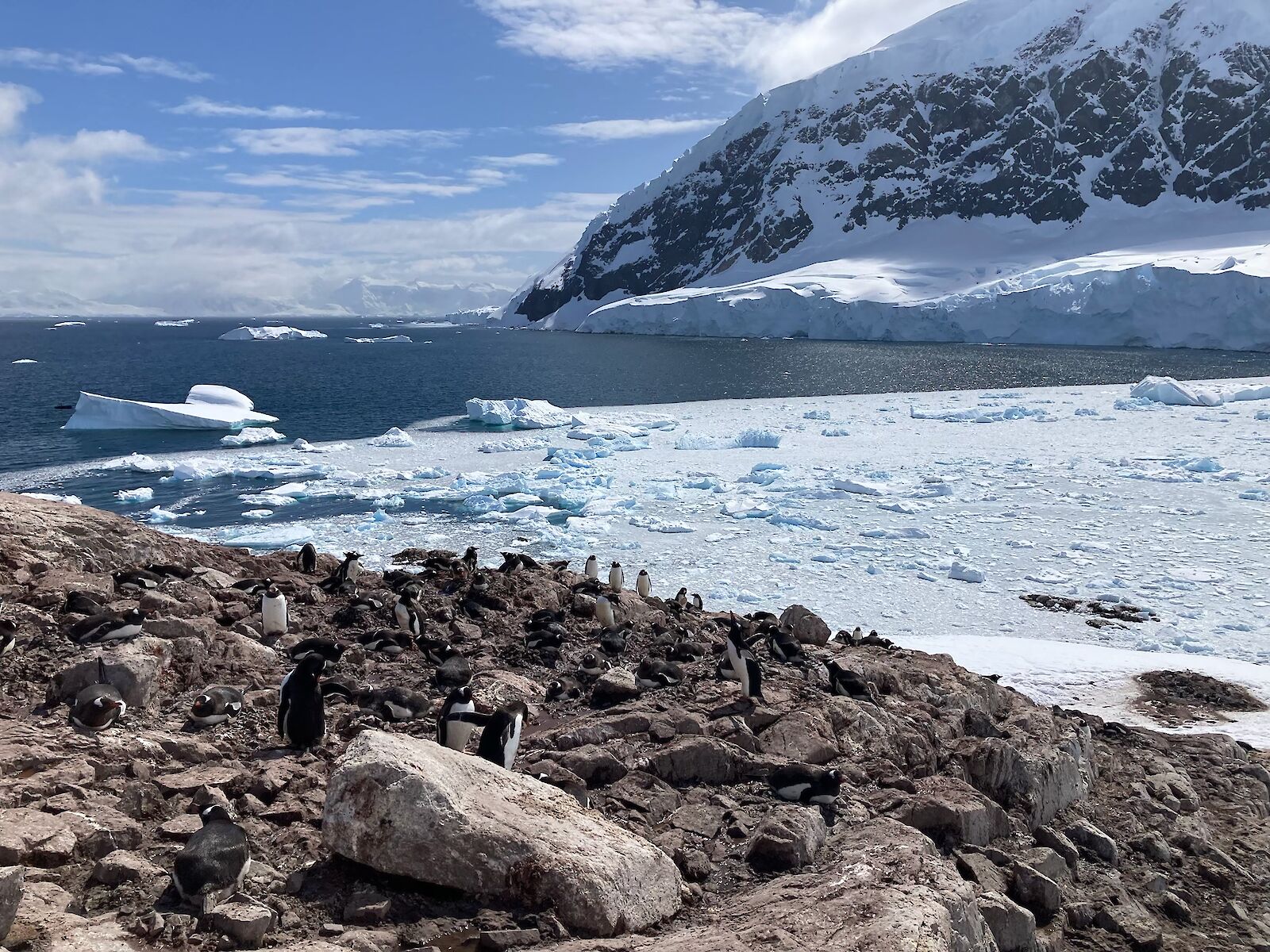The Avian Influenza Has Reached Antarctica: 96% Of Seal Pups Have Died, Hundreds Of Thousands Of Birds Have Perished In South America

The Council of Managers of National Antarctic Programs (COMNAP) has confirmed that two dead skuas found near the Argentinian Primavera station on the Antarctic Peninsula tested positive to the virus in late February.
Millions of birds have already perished from this disease in the northern hemisphere.
The Scientific Committee on Antarctic Research (SCAR), the Council of Managers of National Antarctic Programs (COMNAP), the Committee for Environment Protection (CEP) and the International Association of Antarctica Tour Operators (IAATO) were concerned about the heightened risk of Highly Pathogenic Avian Influenza (HPAI) outbreaks in Antarctica in the 2023/24 season and the devastating impacts it could have on the region’s unique wildlife.
There were concerns that bird flu could be getting better at crossing over to mammals after specialists from the National Service of Natural Areas Protected by the State (Sernanp), an organisation attached to the Ministry of the Environment, recorded the death of 3,487 South American sea lions in Peru.
The Peruvian government reported in March 2023 that since November 2022 around 3% of the country's population of these animals have died as a result of HPAI, the deadliest form of bird flu.
The virus is affecting countries such as Bolivia, Uruguay and Argentina, and recently there have been reports of deaths of animals with symptoms similar to those found in Peru and diagnosed with avian flu, in northern Chile.
The first reported outbreak of high pathogenicity H5N1 avian influenza (HPAI) in elephant seals has been identified by researchers in Argentina. The outbreak caused extreme mortality, with a 70% mortality rate in pups born in the 2023 breeding season, according to research co-led by the UC Davis Wildlife Health Center at the School of Veterinary Medicine and published in Marine Mammal Science. Adult seals were also affected, with a significant decrease in numbers.
The mortality rate reached at least 96% by early November 2023, in the surveyed areas at Península Valdés (PV) in Argentina.
As of Friday March 22 2024 reports coming in state more than 20,000 sea lions have died in Chile and Peru and thousands of elephant seals have died in Argentina.
In Brazil the virus has run rampant in other animal populations. In addition to the outbreaks among seabirds, seals and sea lions, authorities have collected samples of dead porpoises and penguins found on beaches, with no confirmed results yet. Oceanographer Silvina Botta, at the Rio Grande Federal University (FURG), said the carcasses have to be buried or incinerated as soon as possible to reduce the risk of contaminating humans or other animals.
Scientists also found some sea mammals convulsing along local beaches, as the virus attacks their nervous system. Under government health regulations, animals have to be euthanised to spare "a very painful death," Botta said.
_(Peninsula_de_Valdes,_Jan_1984).jpg?timestamp=1711219708760)
Sea lion colony at Península Valdés in 1984; 96% of pups have died
Scientists have said bird flu might have played a role in the deaths of hundreds of endangered Caspian seals in Russia last year. A further 2,500 Caspian seals on the Caspian Sea coast were found dead in December 2022. Authorities in the Russian province of Dagestan said then it was unclear why the mass deaths happened but that it was likely due to natural causes. Zaur Gapizov, head of the Caspian Environmental Protection Center, said in a statement that the seals likely died a couple of weeks ago. He added that there was no sign that they were killed or caught in fishing nets.
A month later a press release from the Dagestan State University stated that (an as yet unsubtyped) avian influenza A virus was detected in the carcasses of these seals.
“The loss of wildlife at the current scale presents an unprecedented risk of wildlife population collapse, creating an ecological crisis," the World Organisation for Animal Health, an intergovernmental organisation, said in a statement.
The deaths of marine mammals are even more concerning because of mutations of the avian virus, according to a paper, 'Highly pathogenic avian influenza A (H5N1) in marine mammals and seabirds in Peru', published in the journal Nature Communications in September 2023.
Based on the recent risk Scientific Committee on Antarctic Research assessment, 'Biological Risk Assessment of Highly Pathogenic Avian Influenza in the Southern Ocean', animal species including skuas, gulls, fur seals and sea lions are at highest risk of HPAI infection, followed by penguins, sheathbills, giant petrels, and birds of prey found on subantarctic islands, such as Caracara. Species such as skuas, gulls, giant petrels and sheathbills are also considered to be the most likely species to transport the virus to the region.
''To date, over 500,000 seabirds and over 20,000 sea lions have died due to HPAI H5N1 in Peru and Chile alone.'' SCAR stated
In 1996, highly pathogenic avian influenza H5N1 virus was first identified in domestic waterfowl in Southern China. The virus is named A/goose/Guangdong/1/1996.
In 1997, H5N1 poultry outbreaks in Hong Kong and China were associated with 18 human cases and 6 deaths and would go on to cause more than 860 human cases with a higher than 50%death rate. This strain reappeared in late 2003 and rapidly spread to birds in other countries in Asia; and later to some areas of the Middle-East, Europe and Africa. The H5N1 AI strain has caused further serious infections in humans and deaths.
The Australian Antarctic Division has stated there were always fears Avian Influenza would reach Antarctica this season but seabird ecologist Dr Louise Emmerson said it was a shock nonetheless.
“It has had a devastating effect in nearby South America,” she said.
“Tens of millions of birds have died globally and there is evidence that it also had a dramatic impact on southern elephant seals and fur seals.
“Some individuals within populations seem to be coming through it OK but there have been some weird and unexpected outcomes for some species. The northern gannet, for example, usually has blue eyes but when they recover from Avian Influenza, their eyes are black and we are not sure why.”
What’s more, Dr Emmerson said no-one knew what the impact of that adaptation would be.
“Could the black-eyed gannets have a breeding disadvantage? And did their blue eyes help with their foraging? There’s so much we don’t know about how species will respond and we need more research to resolve this.”
Cruise ships adopt new biosecurity measures
Dr Emmerson spent some of the summer monitoring bird colonies for the virus from a cruise ship on the Antarctic Peninsula with a colleague from Oxford University in the UK.
Dr Emmerson and her colleague, Dr Tom Hart, would join the expedition team on a zodiac and head out on a scouting trip to a penguin colony.
They would visually scout for signs of the disease and go ashore first, to conduct drone surveys of the penguin colonies and check the site was clear for passengers.
At the time, there were no signs of the mass deaths or neurological symptoms characteristic of the disease, but biosecurity measures on cruise ships had been ramped up in response to the risk.
“Before passengers came down to get on a small boat to visit a penguin colony they’d take their hiking boots and poles and their backpacks and camera bags – anything they were going to take into the field, and they’d disinfect them.
“The cruise ship provided rubber boots for everyone to walk in, and an outer layer with a hood and walking poles for people to use so we could make sure everything was clean.
“Then when we got back, everyone would scrub their boots and poles and make sure everything that had touched the ground was disinfected.
“This year, we didn’t allow people to sit on the ground or put their packs on the ground. But the passengers were great about it, they took the risk to the wildlife and themselves very seriously.”

Dr Emmerson’s monitoring work included visiting this gentoo penguin colony on the Antarctic Peninsula. Photo: Dr Louise Emmerson
“The species we were always most worried about was skuas”
Some colonies along the Peninsula had been closed to visitors while suspect deaths were investigated but none were confirmed as Avian Influenza.
However by then, the virus was confirmed on South Georgia and the Falkland Islands.
“The species we were always most worried about was skuas because they’re scavengers and they undertake considerable winter migrations. For example, the skuas from East Antarctica fly all the way up to Japan, Korea and China so the chance of them being exposed to the disease was always greater. Penguins that breed in Antarctica don’t go very far north in winter so if they get it, it will be from other wildlife, including the northerly migrating seabirds, or humans.”
Camera network vital for monitoring
As part of the summer monitoring project, Dr Emmerson and Dr Hart also maintained and downloaded data from Dr Hart’s camera network, set up along the Antarctic Peninsula to monitor nesting sites.
The network is based on an idea pioneered in Hobart by Australian Antarctic Division engineers in the early 2000s.
The AAD’s network has about 44 cameras set up at key locations along the East Antarctic coastline, taking ten photos a day of about 30 to 40 nests per camera.
Species monitored include surface nesters like Adelie penguins, cape petrels, fulmars, southern giant petrels and emperor penguins.
“The cameras are on tripods and they’re very robust,” Dr Emmerson said.
“We can use the images to monitor when the birds arrive and leave, the timing of chick creche and their breeding success.
“The photos are stored on a camera card, so we still need to physically go and retrieve it, but that’s because we went for the simplest model possible. If it was downloading to a satellite there would be a requirement for more battery life and there would be issues and financial costs with bandwidth in transferring the images.
“The cameras only focus on a small part of the population so we still need to get there physically to attach foraging trackers and collect samples. It doesn’t replace our field work but it does complement it and allows us to expand the spatial coverage of our monitoring.”
Dr Hart’s network includes about 100 cameras placed along the Antarctic Peninsula and unlike the AAD’s, relies on artificial intelligence to process the images.
Networks like these are now critical to track the incursion of Avian Influenza and planning is underway to check some of the more remote parts of the AAD network near Davis research station before the end of the research season.
The AAD will also revisit its bird flu management protocols.
“We need to make sure all our expeditioners know what their responsibilities are and where the disinfectant is and what to do if there are signs of the virus,” Dr Emmerson said.
“We can’t stop it spreading through the natural migratory process, but we can stop ourselves moving it around and that’s what we need to focus on.”